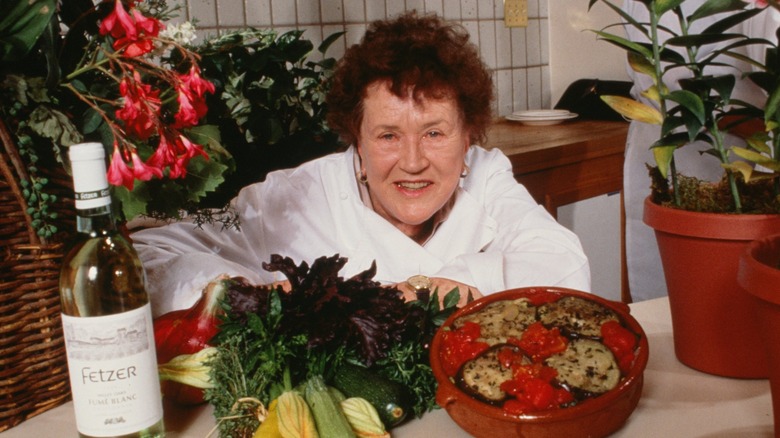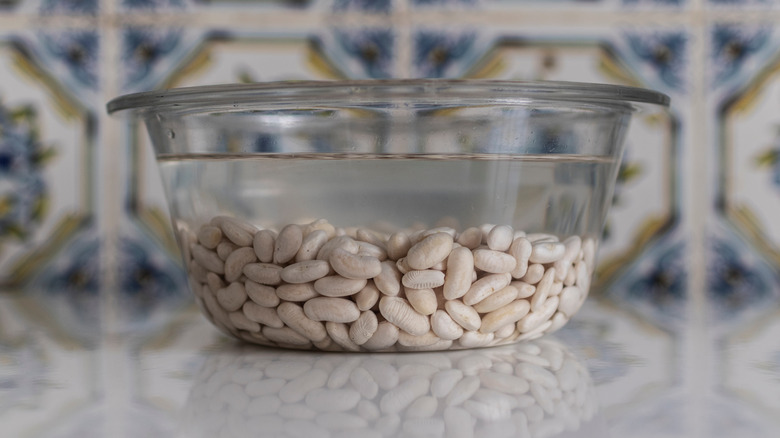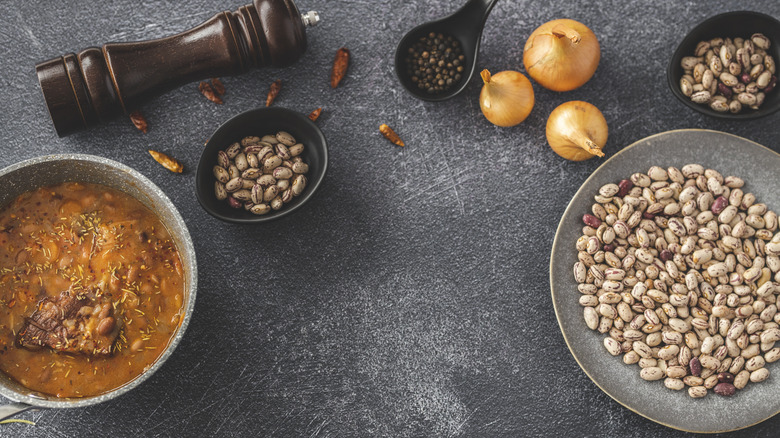Julia Child's Soaking Technique For 'Unforgettable' Beans
Beans are indeed a magical fruit. They're inexpensive, packed with fiber, and amazingly adaptable. Best of all, when cooked at home, they can produce a rich and flavorful broth that's a meal in and of itself. Still, some home cooks are intimidated by cooking these dried legumes.
Luckily, culinary force of nature Julia Child once offered a method for beans that can turn out "tender, meaty, and as thoroughly pleasurable as a bean can be" (via Food & Wine). And it all comes down to an overnight soak.
Child's method is pretty straightforward and simple. She suggests covering rinsed dried beans with cold water and allowing them to sit overnight and rehydrate. In the morning, a quick check with your teeth will help determine if they're ready to use. Bite into one or two, checking for a firm texture without a rock-hard center. If they have give all the way through, they're ready for the stove, pressure cooker, slow cooker, or even oven.
The key to successfully soaking beans
Though Julia Child does not doctor up her soaking liquid, you can add a small amount of baking soda to the water for creamier dried beans. Just be sure to rinse the batch off before proceeding with cooking them. If you choose not to brine with baking soda, then use the leftover soaking water to actually cook the beans, which will result in more flavor and better texture. (Some people believe discarding the soak helps prevent gas, but the jury's still out on that one).
As you consider cooking legumes, also take into account the type of bean you're preparing. You'll see the biggest impact when soaking older beans that may have languished on grocery shelves or in the back of your pantry for a while. Soaking will also have a greater effect on thicker-skinned beans, like kidney beans and certain runner beans, as well as chickpeas.
Soaking is thought to promote even cooking, reduce the time on the stove, and encourage a softer texture. That being said, some bean enthusiasts think it's possible to over soak and wind up with crunchy beans, so don't set them aside for days at a time (one night will do the trick). If you live somewhere warm or are soaking for longer than the overnight bath Child suggests, stick your beans in the fridge to keep them fresh.
Cooking a flavorful bean and broth
After you've finished soaking your beans and have moved things to the stove, next take the time to add seasonings to the cooking water. Treat the liquid almost like a vegetable stock. Think about including aromatics like carrots, celery, onion, and garlic, as well as plenty of olive oil to add fat and salt for flavor.
For additional umami richness, you can lean on parmesan rinds or meaty additions like ham hocks and smoked turkey parts. Julia Child suggests blanched and sliced salt pork, as well. Vegans can turn to smoky paprika or dried kombu, a type of seaweed, for complexity. When in doubt, add a bay leaf, dried hot pepper, and a measure of fresh or dried herbs to round out the flavor in the liquid.
Once you're done, you're all set to make recipes like Tuscan white bean soup with your legumes. Though you can use vegetable broth as your soup base, consider swapping in your enriched cooking liquid gleaned from the soaking period to infuse even more depth into the savory meal, and finish with a splash of acid to round out the final dish.



